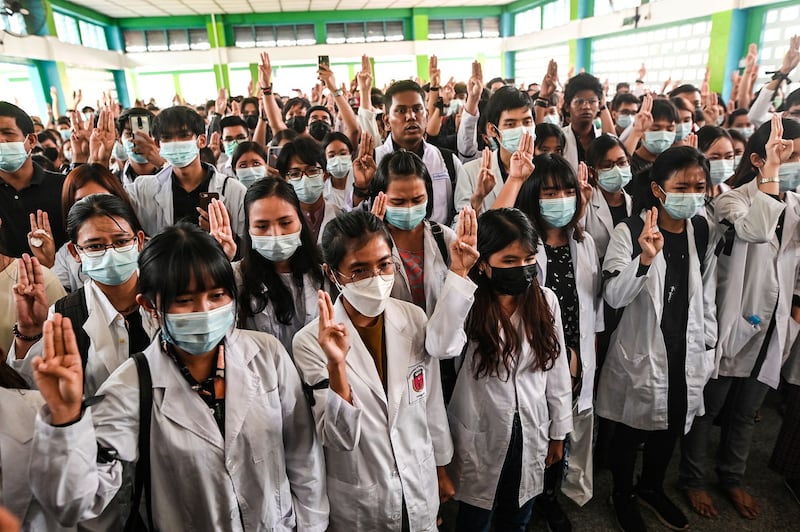Physicians and other medical workers in Myanmar who joined a national strike last year to protest the ruling military regime are resisting the junta’s efforts to convince them to return, as the country’s health care system feels the strain of widespread absences.
Started by doctors in Mandalay the day after the military deposed the democratically elected government in a Feb. 1, 2021, coup, the Civil Disobedience Movement (CDM) became so strong that it nearly paralyzed the regime’s ability to deliver public services. The movement supports the shadow National Unity Government (NUG), which has been nominated for the 2022 Nobel Peace Prize for its “non-violent struggle for democracy and strong opposition to military oppression.”
Though some physicians have returned to work out of financial necessity, others say they are standing firm in opposing the regime, despite the hardships they face.
“We have to think hard about going back to work under the junta,” a doctor from the Ayeyarwady region told RFA. “From the very beginning, we had no desire to work under them. We’re not going back.”
He said that Myanmar’s health care system is struggling, even though some health care workers have returned to work.
“Most health care personnel, including nurses and lower-level staff, are still in the CDM,” he said.
A CDM doctor in Yangon, who declined to be named, told RFA that he was fearful because authorities have arrested some health care professionals who refused to return to work. He said that he has been threatened with the revocation of his medical license if he continues to protest the regime.
“After more than a year and a half after the coup, we are still in the CDM, and living conditions have become very difficult.”
Doctors are able to eke out a living by providing services in clinics outside state-run facilities, but are constantly fearful of being identified by the military, he said.
“We are reluctant to go visit the patient’s house when we are called upon,” the physician said. “We even have to close the clinic before it gets dark. Never had we been so scared in our lives.”

Holding up the pillar
A CDM doctor from Kachin state said he is struggling to make ends meet because he is not allowed to work in local hospitals or clinics and is shut off from other opportunities.
“We aren't allowed to study for advanced degrees, [and] we can’t get service records or apply for specialist licenses,” he told RFA. “Another thing is that we can’t go abroad. If we want to work locally, hospitals don't want to hire us because of our CDM status.
“Even if you want to open a clinic on your own, you can’t get a license, [and] there are fewer job opportunities,” he said. “It's not easy to go abroad, and here, too, you cannot have a decent job.”
Three dozen health care workers had been killed and more than 560 health care workers had been arrested between the day of the coup to March 2022, according to a May report by the Geneva-based NGO Insecurity Insight. The regime also conducted 126 raids on hospitals during that time.
Despite the difficulties that striking health care workers face, Tayza San, the doctor who first took to the streets to protest the putsch, urged CDM members to persevere until the regime falls.
“The entire public knows that the terrorist junta is trying hard to push down the CDM pillar,” he said. “However, our CDM heroes and CDM employees are fighting the battle with determination and conviction.”
“It has been almost a year and a half now, and we will continue to stand and hold the CDM pillar strong until the end of the revolution,” he said.
Dr. Than Naing Soe, spokesman for the junta’s Health Ministry, said he did not have the exact number of health care workers who had left the CDM and returned to work.
RFA could not reach junta spokesman Maj. Gen. Zaw Min Tun for comment
About 60,000 people from the health care sector joined the CDM following the military coup, but now about 45,000 workers are still participating in the movement, according to the CDM Medical Network.
RFA reported in June that the junta urged thousands of school teachers who had joined the CDM to return to classrooms in schools administered by the regime's Education Department, pledging to take no action against those holding spring classes in NUG-dominated areas if they had not committed any crimes.
But some who had left the CDM to resume working for the junta said they were being monitored by their colleagues and had yet to be paid.
Translated by Khin Maung Nyane for RFA Burmese. Written in English by Roseanne Gerin.
